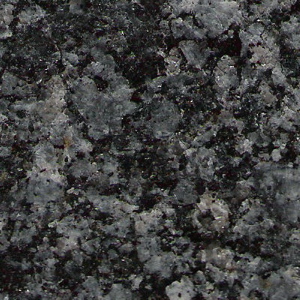
Introducing a couple families of minerals lumped together as:
LITTLE DARK MINERALS
The name "little-dark-minerals" is purely descriptive. Some bird watchers use the term "little brown jobs" to describe small birds that are not easy to identify, so why shouldn't we use "little-dark-minerals" for the same purpose? We want to recognize the importance of a set of minerals rich in iron and magnesium that are chemically and physically similar but difficult to tell apart.
Little-dark-minerals are complex chemically and composed of:
Oxygen
Silicon
plus some iron, magnesium, sodium, potassium, calcium, or aluminumAppearance:
Little-dark-minerals look like little dark minerals, 'natch.
Crystals are shiny, opaque, and very dark colored such as dark green or black.
Individual crystals are multi-faced, and often splintery or columnar.Hardness: usually 5 to 7
How to recognize little-dark-mineral crystals in a rock:
They look like little dark specks in granites.
In some decorative stones such as tombstones, the entire rock can be mostly crystals of little-dark-minerals. Some crystals can be large so the name is not always appropriate.Weathering:
Little-dark-minerals usually weather into clay minerals.
The iron component may become oxidized (like rust) or reduced (at the bottom of a lake).Where you can find little-dark-minerals in Salt Lake County:
- As crystals in the granites in Little Cottonwood Canyon.
- In the igneous rocks of the Oquirrh Mountains
- In many igneous rocks of local cemeteries.
Other:
Little-dark-minerals include literally hundreds of ferro-magnesium minerals, which are far more common in the crust that underlies oceans than the crust that makes up continents. So, although they are not common rock-forming minerals of the bedrock of Salt Lake County, world-wide they are very significant.
